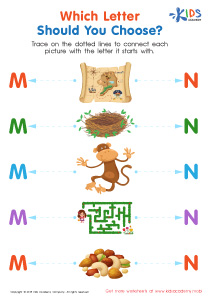Letter recognition Normal Lowercase/Small Letters Worksheets for 6-Year-Olds
10 filtered results
-
From - To
Our Letter Recognition Worksheets for 6-year-olds provide engaging activities to help children master lowercase/small letters. Specifically crafted to make learning fun, these worksheets combine coloring, tracing, and letter-matching exercises that build essential early literacy skills. Aligned with educational standards, these printables are perfect for reinforcing letter recognition, enhancing fine motor skills, and boosting confidence in young learners. By incorporating a variety of interactive tasks, these resources ensure that kids stay motivated and enjoy their learning journey. Perfect for teachers and parents alike, our worksheets are essential tools for fostering a strong foundation in reading and writing.
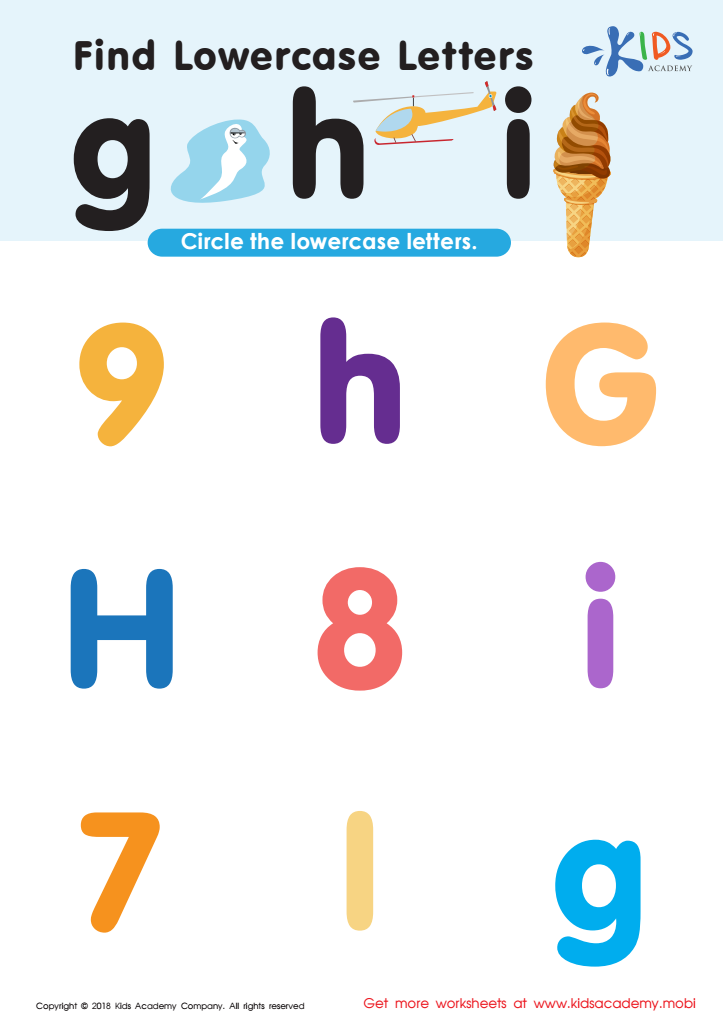

Find Lowercase Letters g h i Worksheet
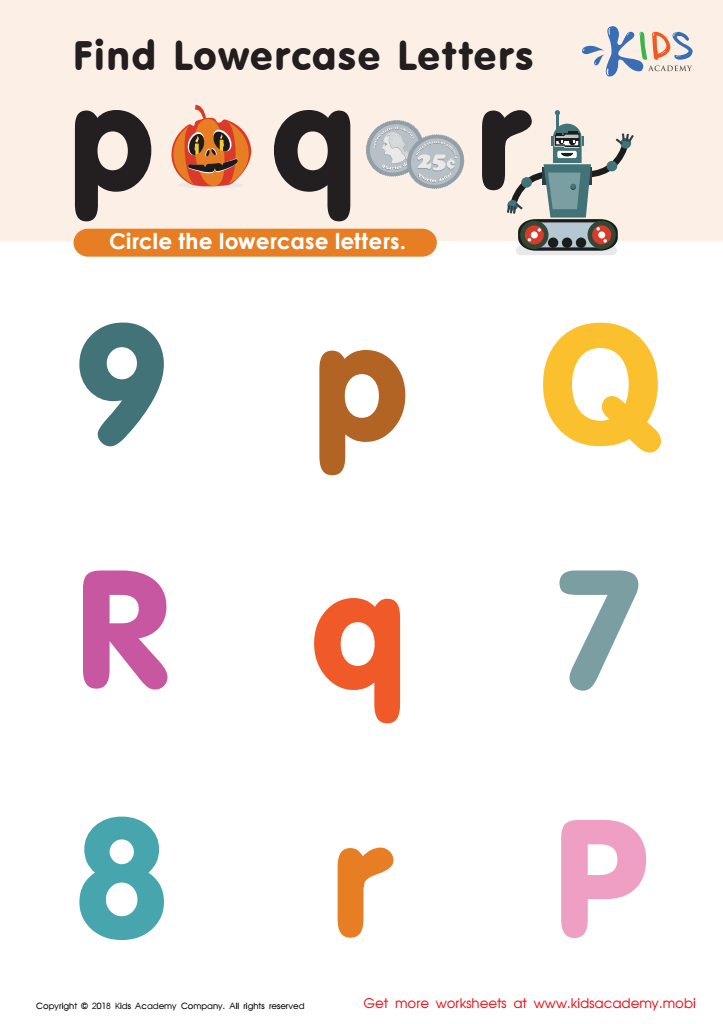

Find lowercase Letters p q r Worksheet
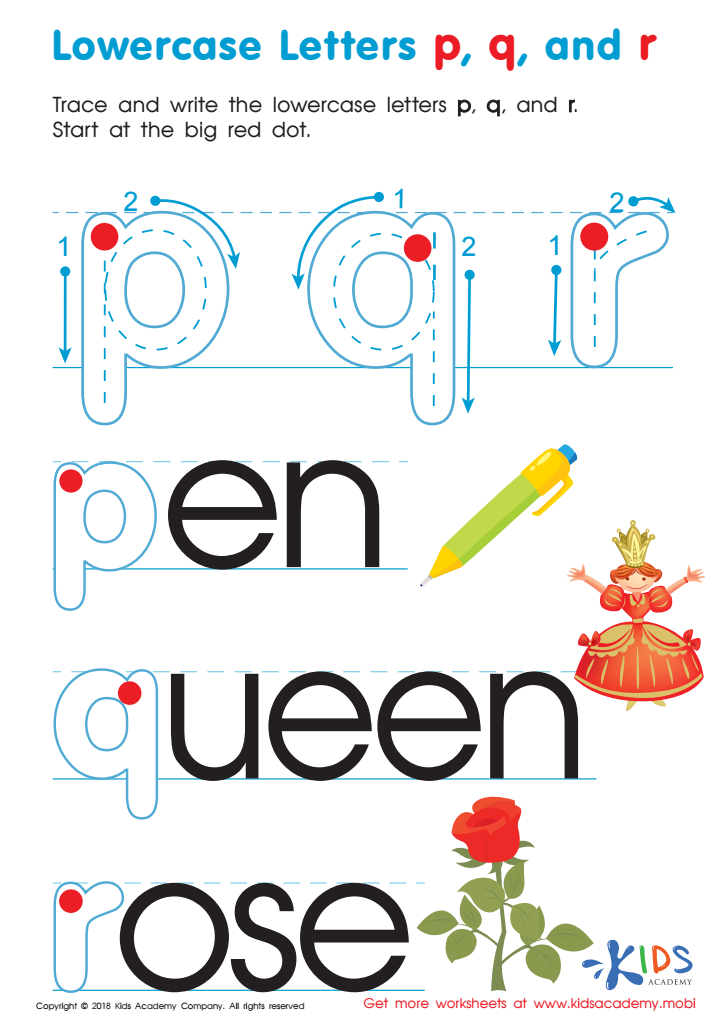

Lowercase Letters p q r Worksheet
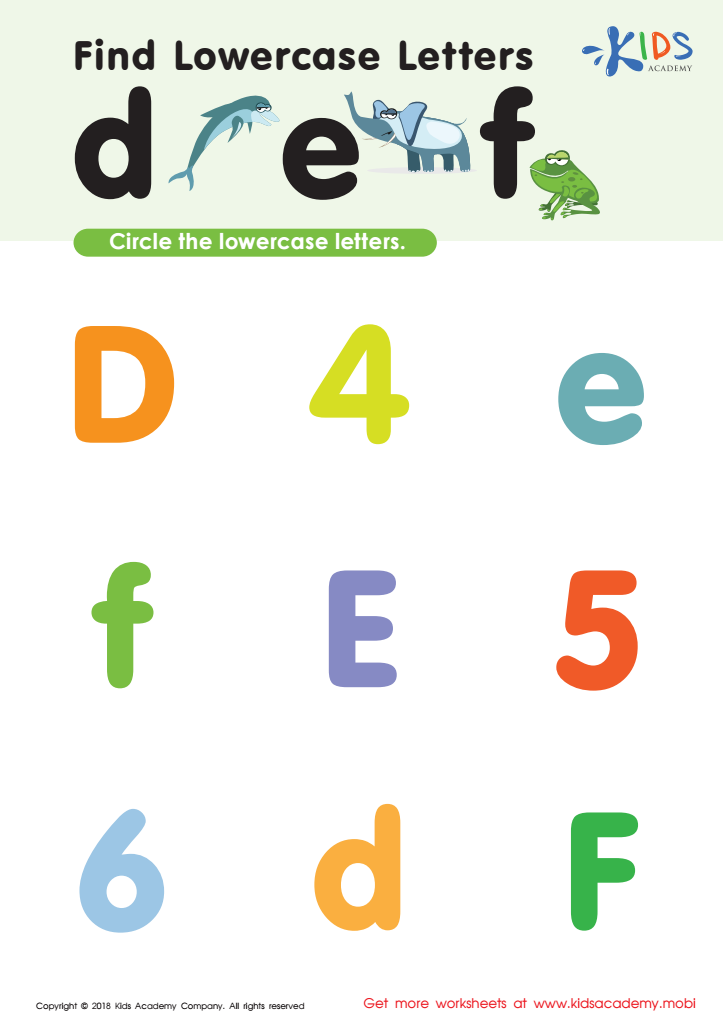

Find Lowercase Letters d e f Worksheet
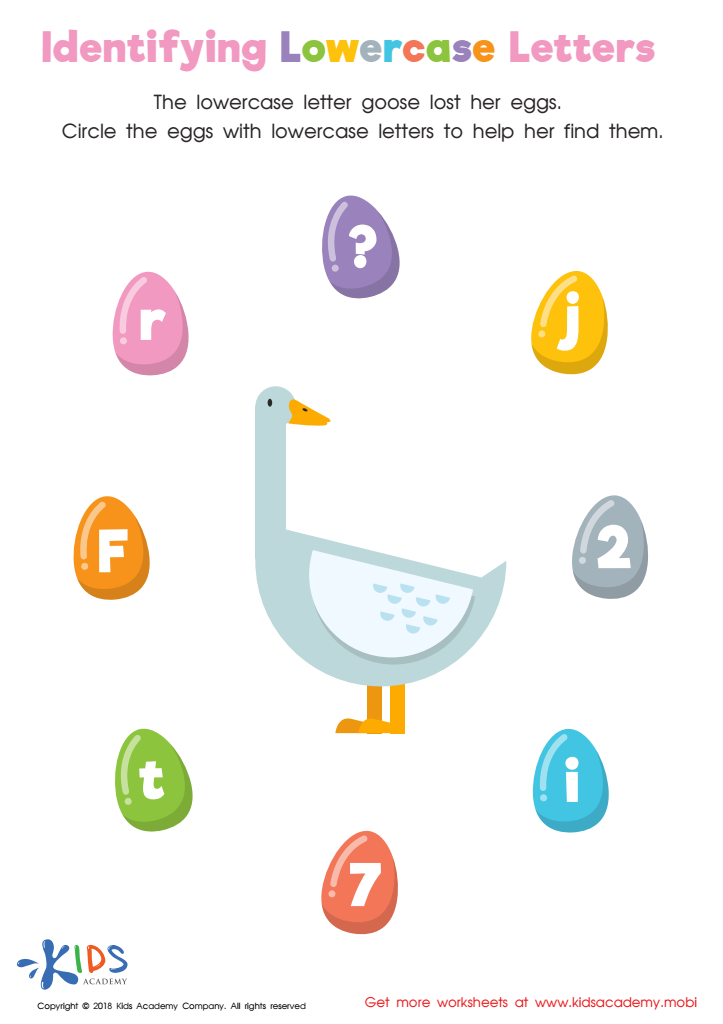

Identifying Lowercase Letters Worksheet
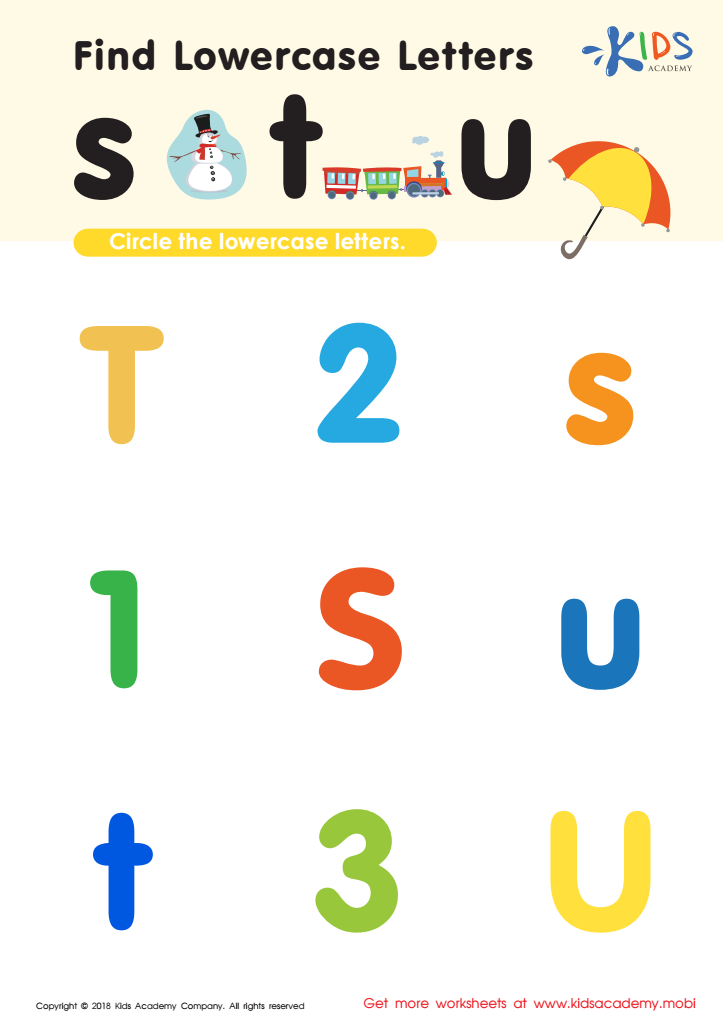

Find lowercase Letters s t u Worksheet
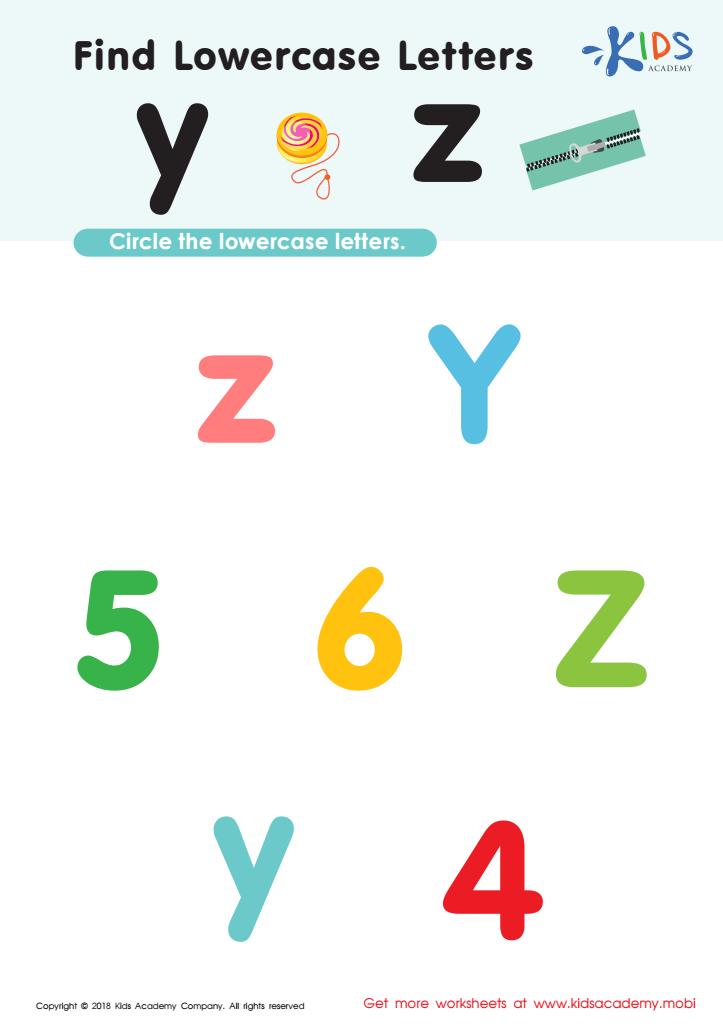

Find Lowercase Letters y z Worksheet
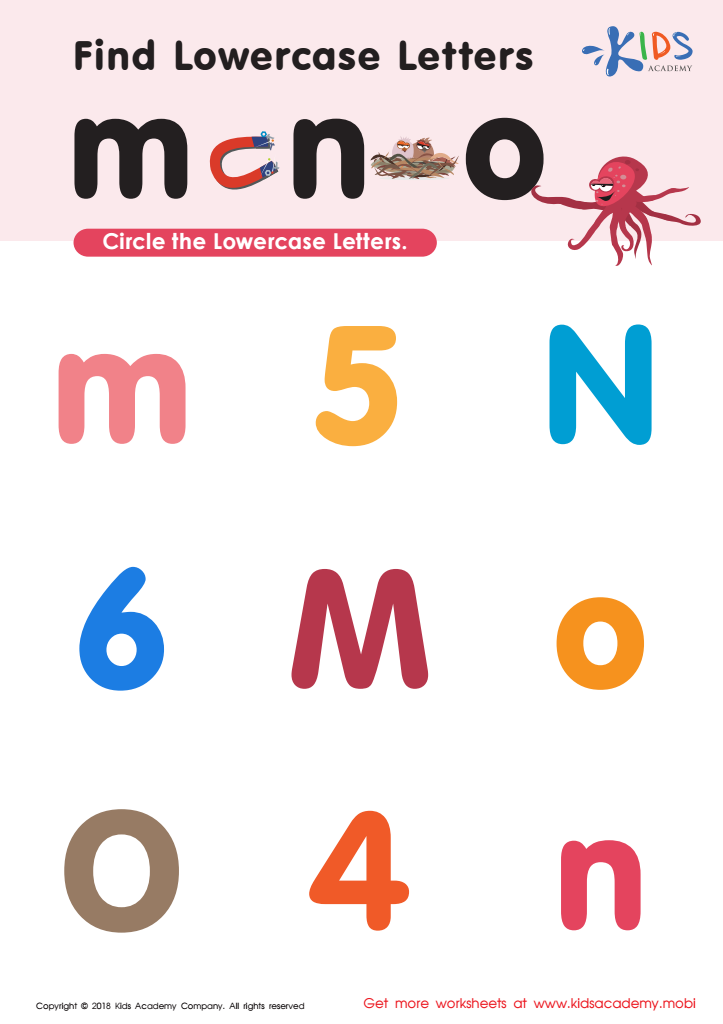

Find Lowercase Letters m n o Worksheet
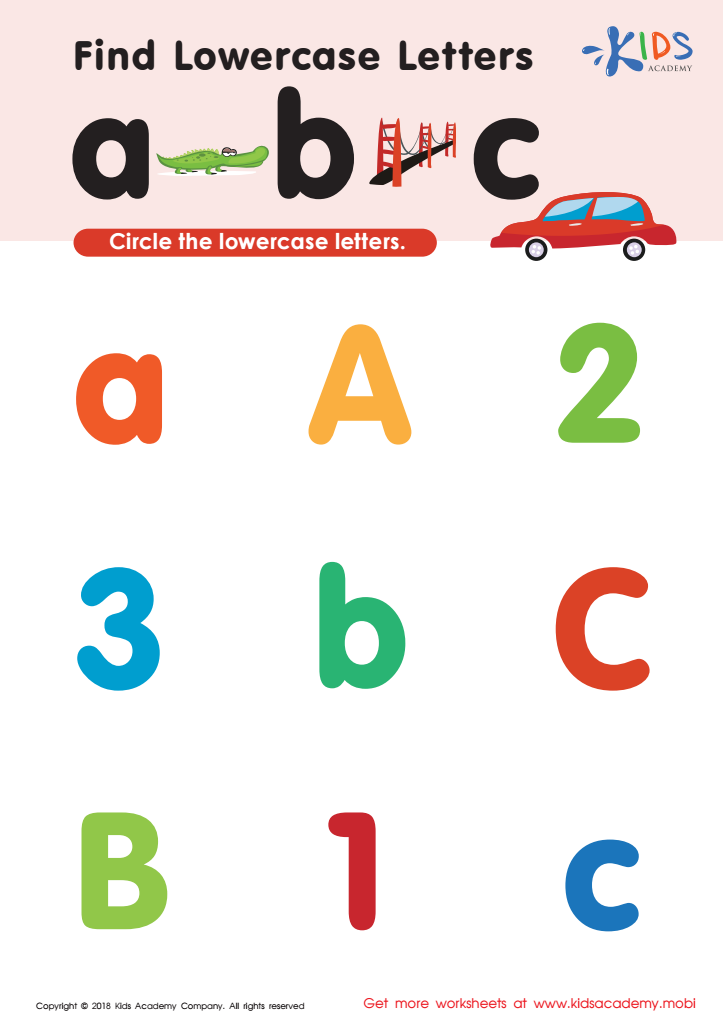

Find lowercase letters a b c Worksheet
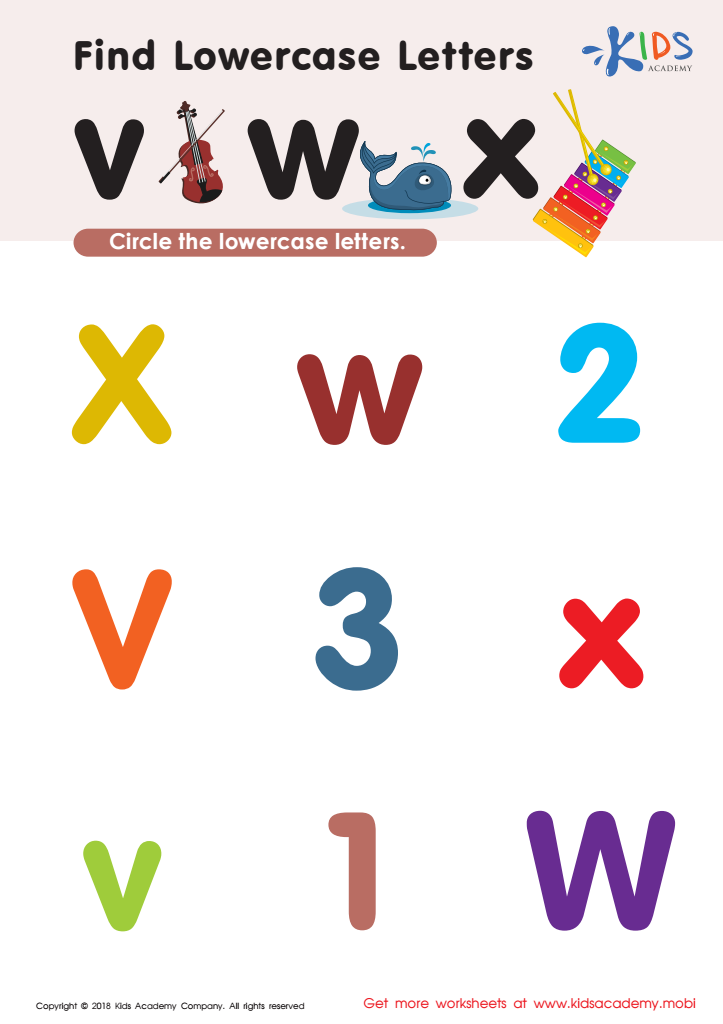

Find Lowercase Letters v w x Worksheet
Parents and teachers should prioritize letter recognition of lowercase letters for 6-year-olds because it forms the foundation of early literacy and reading skills. At this age, children are typically in kindergarten or entering first grade, making it essential for them to recognize and understand the alphabet in both uppercase and lowercase forms. Most of the printed text that children will encounter in books, worksheets, and other educational materials is in lowercase letters. Therefore, proficiency in recognizing these letters directly impacts their reading fluency and comprehension.
Furthermore, letter recognition is a critical step toward phonemic awareness, where children learn the sounds associated with each letter. This skill is vital for decoding words, spelling, and writing. When children can swiftly identify lowercase letters, they experience fewer obstacles while learning new words and sentences, enabling a smoother transition to more advanced literacy skills.
Fostering letter recognition also enhances a child's confidence and excitement about learning. It paves the way for successful academic experiences, boosts their self-esteem, and creates a positive attitude towards education. For teachers and parents, emphasizing lowercase letter recognition reinforces continuity between home and school learning environments, maximizes teaching effectiveness, and contributes significantly to a child's overall academic development and future educational success.
 Assign to My Students
Assign to My Students




